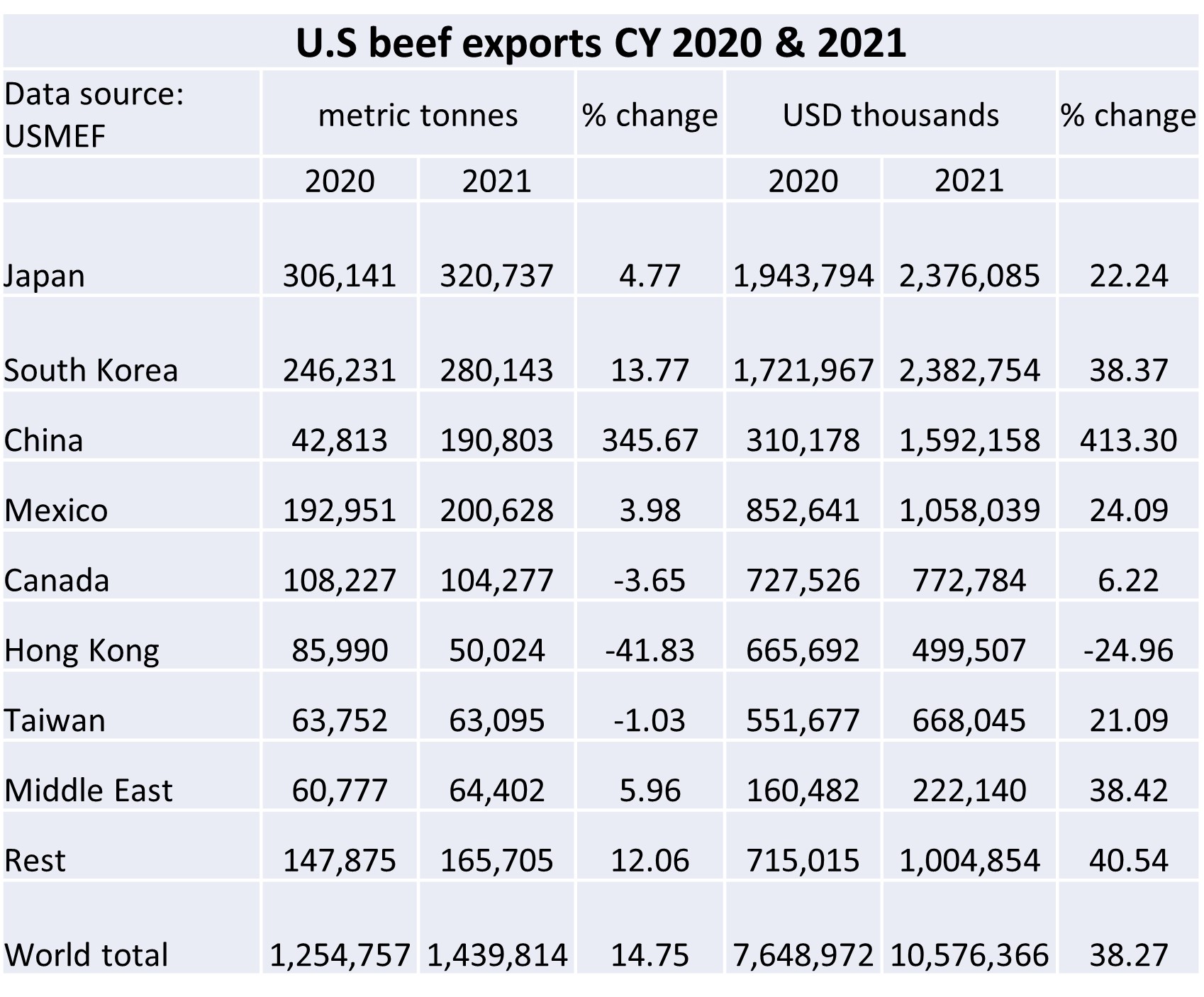U.S. Beef Exports Broke Records In 2021

Noteworthy market developments
In 2021, USDA data compiled by U.S. Meat Export Federation (USMEF), reveal that South Korea surpassed Japan as the leading market destination for U.S. beef as the export value increased 38.37% from USD 1.72 billion to USD 2.38 billion, while the corresponding increase in volume was 13.77%. Exports to Japan increased 4.77% in terms of quantity, while the value of exports increased 22.24% from USD 1.94 billion to USD 2.38 billion.

In general, the global export results are excellent news for the U.S. beef sector, as the increase of 38.27% in exported value is more than double the 14.75% lift in exported quantity.
Future on main markets
It is likely that beef exports to Japan could potentially have reached much higher levels had it not been for Japan’s import safeguard being triggered already on March 17th, meaning that tariff rates rose to 38.5%, up from 25.8%, for a 30-day period. In the coming Japanese FY (April-March) the snapback tariff drops to 30%, and the regular tariff rate during the FY will be 24% coming to effect on April 1st and will apply to all suppliers covered by Japan’s trade agreement, including major competitors such as New Zealand, Australia, Mexico and Canada. U.S. exporters are concerned that they will receive the reduced tariff rate later than other nations, as the current safeguard levels are likely to be exceeded before the end of Japan’s Fiscal Year. In addition, U.S. beef exporters are wary that Australia, which has been holding cattle from the market in recent years, may release larger volumes of beef for the Japanese market.
In South Korea, the safeguard levels and tariffs rate are working more in favor of U.S. exporters, as the threshold under the KORUS was 324,000 in 2021 and thus nowhere near being reached. At the same time, Australia reached the trigger level already by late November meaning that the duty on beef imports from Australia jumped from 18.6% to 30% for the remaining part of the calendar year. In 2022, the safeguard trigger for U.S. exports will increase to 330,000, while the tariffs under the trigger will be lowered to 10.7% from 13.3% in 2021. The expected boom in Australia’s exportable quantities mean that they run the risk of reaching the safeguard trigger even earlier in 2022, which will likely allow U.S. exporters to operate at a substantial advantage towards the end of the calendar year.
In China, the U.S.-China Phase One Economic and Trade Agreement opened market access for beef exports, and this constitutes the main reason for the enormous growth rates on the mainland China market. Out of China’s total beef imports, U.S. beef accounted for 11% of value 6% of volume. China’s imports of animal protein sources other than pork have significantly increased following the widespread ASF outbreak in 2019-2020 and while China is currently quickly picking up the restocking of their pig herds, it remains unknown how much of the animal protein market that beef have taken over from pork in the longer run.


